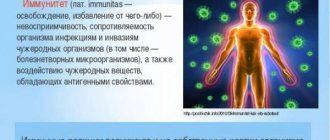People often wonder what kind of pain is the worst. For centuries, humanity has been interested in this seemingly strange question. Indeed, why do people want so badly to know how they or their loved ones might suffer? Probably someone tried to find consolation for their own pain in these searches. Others were simply too curious. One way or another, in the twenty-first century, through wars, revolutions and experiments, they were able to create a kind of rating. This made it possible to find out which pain is the most severe. So let's get started.
First place. Cluster headaches

There is nothing worse or more painful than this syndrome. To prove this, it is only worth mentioning the fact that those suffering from this disease can, without hesitation, kill themselves just to get rid of the pain. Those who managed to survive noted that the pain felt like piercing the eyeballs with hot knitting needles. And although it happens that an attack lasts only fifteen minutes, this is enough to drive a person crazy. Especially considering the fact that attacks occur when they are not expected at all. A person can be doing normal things, drinking coffee in his kitchen or sitting in the office, and then suddenly grab his head and scream. The disease does not appear for months or even decades, but then, one terrible day, the attacks resume. They will be repeated several times a day.
The epicenter is considered to be the area of the head behind the right eye. This is where the acute pain begins. The entire right side of the face turns red and the eyes water. A person has difficulty breathing through the nose. He also begins to sweat profusely. This lasts from fifteen minutes to a full hour.
In some patients, it was noticed that the disease manifests itself only in spring and autumn. But this is far from the rule. Pain can occur whenever it pleases and turn the unfortunate person’s life into hell.
During an exacerbation period, there are usually one to three attacks per day. Most often they happen at the same time. At the end of the period of exacerbation, the pain stops for three years.
Men are six times more likely than women to suffer from this disease.
Second place. Bullet Ant
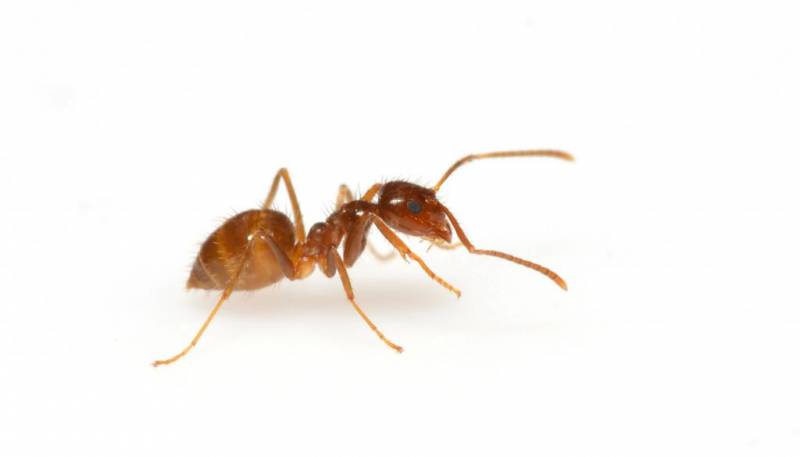
Fortunately, the average person in Europe, Asia and America has to work hard to experience this type of pain. The fact is that the bullet ant, or Paraponera clavata, lives exclusively in tropical forests. But it is no coincidence that it is called the “killer ant” and the “24-hour ant.” The pain from the bite lasts non-stop for a whole day. The wounded area will be temporarily paralyzed and the skin will turn black. This pain is usually compared to a gunshot wound. But why? What is it about this ant?
The bottom line is that the bullet ant's sting contains a powerful aminoleptide called PoTX or Poneration. In Russian translation it is pronounced “poneratoxin”. When interacting with nerve cells, this aminoleptide behaves quite specifically. And thus causes an extremely painful reaction in an unlucky tourist or local resident. And if this person is susceptible to allergies, he may even die.
No insect can match the bullet ant in the art of inflicting pain. However, this little tormentor resorts to bites only in the most extreme cases. First, he will try to scare away the threat: we will whistle and emit unpleasant odors. If this does not help, then the responsibility lies with the bitten person, who did not know that one of the most severe pains is caused by the bullet ant.
Chapter 1 Prostate gland in the genitourinary system
Why did the prostate gland become the “leader” in this chapter? Because it is a specific male organ with which many functions and a number of diseases are associated. In addition, I would like to draw attention to the problems associated with this body.
The prostate gland (prostate) cannot be considered as an isolated organ. Understanding its functions and diseases is possible only by considering the prostate as part of the urinary tract and male genital organs. Therefore, a brief description of the so-called genitourinary (urogenital) system is necessary.
Structure and functions of the urinary system
The task of this system is to filter excess fluid and harmful waste products from the blood and remove them from the body through urine. It consists of the kidneys, ureters, bladder, and urethra. The adrenal glands are located above the kidneys in the form of a “cap,” but they do not belong to this system. This is a gland that produces about thirty vital hormones, including glucocorticoids, adrenaline and androgens (in small quantities).
Kidneys and renal pelvis
The kidneys are a paired bean-shaped organ, 10–12 cm long and weighing 120–180 g, located on both sides of the spine behind the abdominal cavity. They are shrouded in a layer of fat and surrounded by a strong capsule. The right kidney borders on top of the liver, which somewhat covers it, and the left one is located under the spleen. In the middle part of the kidney (“gate”), turned towards the middle of the body, there is a neurovascular bundle. The renal pelvis, which passes into the ureter, is also located here. On a section of the kidney, the cortical layer is isolated, which penetrates into the medulla in wide strips, forming here seven to nine pyramids.
Genitourinary system (male)
1
– kidney;
2
– ureter;
3
– bladder;
4
– urethra and corpus spongiosum of the penis, starting with the bulb and ending with the head of the penis;
5
– testicle;
6
– epididymis;
7
– vas deferens;
8
– prostate gland;
9
– seminal vesicles
In the cortex there are about 1 million renal glomeruli, convoluted tubules that pass into the medulla, where they form calyces, which in turn pass into the renal pelvis.
The kidneys constantly undergo a process of filtration and reabsorption (reabsorption). In 1 minute, about 1.2 liters of blood passes through the numerous vessels of the glomeruli, which is filtered here. Water and metabolic products are filtered through the vascular wall of the glomerular capsule. Approximately 120 ml of primary urine is produced in 1 minute. However, passing through numerous renal tubules, about 99% of water, nutrients and mineral salts from primary urine return to the vascular bed. The remaining concentrated urine (1.2–2 liters per day) is secreted into the renal pelvis and excreted from the body through the urinary tract. Purified blood enters the circulation through the renal vein. The urine of a healthy person is clear and yellowish. In addition to water, it contains products of nitrogen metabolism, various slags and salts.
Internal structure of the kidney
1
– renal cortex;
2
– renal pelvis;
3
– ureter;
4
– renal pyramid ending in a papilla;
5
– large renal calyx;
6
– small renal calyx;
7
– renal medulla
Ureter
From the renal pelvis, urine flows through the ureter into the bladder. Its length is usually 25–30 cm, diameter 4–7 mm. The muscle wall is lined with mucous membrane. Thanks to peristalsis, urine is squeezed down. There are three narrowings along the ureter. This is where kidney stones usually get stuck. Spastic attempts of the ureteral muscles to overcome the obstacle cause colicky pain.
Bladder and urethra
The bladder is located in the pelvis. When maximally filled, it can stretch to the navel. Its walls consist of smooth, involuntary muscles covered with mucous membrane. In the bladder, both ureters open with their orifices, which have valve-type devices that prevent the backflow of urine into the kidneys. Urine is discharged from the bladder through the urethra (urethra). The role of the bladder is simple. It serves as a container for collecting urine and subsequently removing it in large portions. Usually 300–400 ml of urine is enough to cause receptor irritation associated with distension of the bladder walls, followed by an urge to urinate. Thanks to the regulation of the nervous system, both obturator muscles expand, facilitating urination. Fortunately, under normal conditions, involuntary urination does not occur due to the obturator externus muscle. The maximum filling of the bladder is about 1 liter.
The anterior part of the bladder (neck) passes into the urethra. Its length in men is 20–25 cm, and in women only 4–5 cm (this is associated with a more frequent incidence of bladder inflammation in women). When urinating, the urethra expands to 8 mm. It is also lined with mucous membrane. Being the final section of the urinary tract, it serves to excrete urine.
Male genitals
Since the male genital organs are in close relationship with the urinary system, they are combined into the urogenital system. In men, the testicles and their appendages, the vas deferens, the penis and the prostate gland are isolated.
Testicles and epididymis
Male sperm cells are produced in the testicles. This is a paired oval organ, similar in appearance and size to a pigeon egg, weighing about 30 g. They are located in a skin sac - the scrotum - and are surrounded by a dense connective tissue membrane. Each testicle consists of approximately two hundred individual lobules, separated from each other by thin partitions. Each of them has several convoluted tubules lined with seminiferous epithelium, where sperm develop from primary germ cells. The seed enters the epididymis through the efferent tubules (there are ten to twenty-five of them). It consists of numerous convoluted tubules where sperm mature. The epididymis - an oblong tubular organ - is adjacent to the upper pole and posterior surface of the testicle and, tapering downwards, passes into the vas deferens. Its upper section is called the head, the middle – the body, and the lower – the tail.
Male genitals
1
– seminal vesicle;
2
– excretory duct;
3
– prostate;
4
– vas deferens;
5
– bladder;
6
– pubic bone (section);
7
– cavernous (cavernous) body of the penis;
8
– urethra;
9
– cavernous body of the urethra;
10
– head of the penis;
11
– epididymis;
12
– seminiferous tubules;
13
– testicle;
14
– scrotum
The testicles, being the main sex gland of the male body, perform two important functions: internal and external secretion. The intrasecretory, that is, hormonal, function of the testicles is the production of the male sex hormone, which affects the appearance of secondary sexual characteristics at a certain period in a man’s life (body hair growth, specific features of the development and structure of the neuromuscular and skeletal systems, etc.) , and by the time of puberty it provides (together with other factors) sexual desire and sexual function.
Internal secretion is carried out by special cells, the activity of which begins to increase during puberty, reaches a maximum between the ages of 20 and 40, and then gradually decreases. However, complete cessation of the intrasecretory function of the testicles does not occur even in old age.
The exocrine function of the testicles includes their ability to form sperm, the production of which begins during puberty (12–16 years) and continues throughout a man’s life. There are, undoubtedly, individual fluctuations in the timing of the extinction of testicular activity, both internally and exocrinely, but the preservation of both functions (and, consequently, the ability to perform sexual intercourse and fertilization) until very old age is not uncommon.
The epididymis serves as a temporary reservoir and excretory duct for sperm coming from the testicle. In this reservoir, the maturation of sperm occurs, during which the fluid produced by the wall of the epididymis, the secretion of the epididymis, plays a certain role. The largest accumulation of sperm occurs in the tail of the epididymis. Only after passing through the epididymis do sperm acquire the ability to fertilize.
Vas deferens
The convoluted tubules of the epididymis unite into a single outlet and pass into the vas deferens. This is a long and thin tube about 50 cm, which, as part of the spermatic cord, along with the vessels and nerve, passes through the inguinal canal into the pelvis, where it approaches the back of the urethra. Before flowing into it, the vas deferens forms an extension - an ampulla, into which the excretory duct of the seminal vesicle located nearby flows from the side. The ampulla of the vas deferens passes into the ejaculatory duct, which, after passing through the thickness of the prostate gland, opens at the top of the seminiferous tubercle in the posterior part of the urethra. At the moment of ejaculation (ejaculation), an immediate contraction and emptying of the ampulla and the final section of the vas deferens into the urethra occurs. After this, the duct relaxes and lengthens again, again filling with sperm.
The seminal vesicle is a paired pear-shaped saccular organ. It is located above the prostate gland posterior to the bottom of the bladder and anterior to the rectal ampulla. Its excretory duct flows into the ampulla of the vas deferens. It is only 4–5 cm long and about 1 cm in diameter. The secretion of the seminal vesicles is part of the seed. The most important component of the secretion is the enzyme fructose, which is necessary to maintain the viability of sperm. The seminal vesicles also serve as an additional reservoir for excess sperm if they overflow the ampulla of the vas deferens.
Penis
This organ plays a vital role in the life of every man. It begins with the root and ends with the head, surrounded by the foreskin, connected on the back surface to the body by a skin ligament - the frenulum. Normally, the foreskin moves freely from the head, completely opening it. On the inner layer of the foreskin and on the skin of the head of the penis (in the area of the coronary sulcus), starting from early childhood, a special substance is constantly formed - smegma. It should be washed off to prevent inflammatory diseases and penile cancer. Other reasons are also important for the development of such a formidable pathology, but this does not detract from the need for careful hygienic procedures. The male penis has three cavernous bodies containing a large number of venous cavities, which fill with blood during sexual arousal. It increases significantly in size and becomes tense, which allows a man to have sexual intercourse. The urethra passes between the corpora cavernosa, through which urine and semen are released.
Third place. Trigeminal neuritis
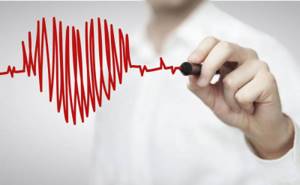
But the beautiful half of humanity most often suffers from this disease. The pain from trigeminal neuritis feels like being struck by real lightning. Occurs as a result of various bruises and head injuries, errors in maxillofacial surgery and hypothermia of the head or neck. The most acute pain occurs in the area of the upper and lower jaws, when a person twists or simply turns his head. Moreover, there are several types of trigeminal neuritis.
The first of these is called pain syndrome. It can be caused by simply touching the inner corner of the eye and the so-called fragile areas of the face. The pain this causes is some of the most severe pain a person can experience. Reminds me of an electric shock. The attacks are very frequent, although they last only a couple of minutes or seconds. When a person eats, speaks, or enters a cool room, the pain intensifies.
The second type of this neuritis is called “motor and reflex disorders.” They are characterized by nervous tics, pallor, tears and snot. The symptoms of motor and reflex disorders resemble pain syndromes. The only distinctive quality is that the memory of it can lead to a repetition of the attack, and the pain is mostly constant.
Fourth place. Dercum's disease
In the scientific world it is known under the name “Painful lipomatosis”, but due to the fact that this disease was discovered by the American scientist Dercum, the name stuck. The disease itself is characterized by inflammation of large fat deposits, which lead to hormonal problems and depression, itching all over the skin, and serious loss of strength. Women from forty to ninety years of age are most often affected by the disease.
Treatment is possible, but ineffective, especially if Dercum's disease has reached a critical phase. The children of those suffering from this disease have a fifty percent chance of getting it too. The unfortunate claim that even from the contact of clothing with skin they suffer greatly. The same applies to tactile contacts. Even with simple movement, a person experiences unbearable pain.
The worst thing is that no one is able to notice how the disease progresses.
Fifth place. Sudeck's atrophy
Let's say a hypothetical person breaks his ankle. In a normal situation, after visiting the trauma center at the local hospital, his fate would be quite typical. But if he develops Sudeck syndrome, then the problems after the fracture will only begin. The person will feel sharp pain when he moves the injured limb. But even a recumbent lifestyle is unlikely to help here. The painful sensations will only become stronger. The skin, which will initially be warm or even hot to the touch, will thin and become marble-like. The slightest blow could damage the limb again, and then the real problems would begin. The suffering of the unfortunate person does not stop for a second. At a certain stage, touching the tissue surface also causes acute painful sensations. And treatment, no matter how expensive, in most cases does not produce any results.
Sixth place. Urolithiasis disease

Despite the frightening prevalence of this disease, the pain from it can hardly be called tolerable. A person most often does not even suspect that he is far from completely healthy. But then a series of attacks of acute pain quickly convince him otherwise. Moreover, they can last almost an hour. These attacks are usually triggered by heavy physical activity. And in some cases, drinking a lot of water. As stones move through the ureter, they cause pain throughout the body. In the upper and lower abdomen, in the right and left side. Can easily be confused with acute appendicitis.
The patient feels sick and vomits. A person constantly experiences an irresistible urge to go to the toilet, and blood will soon be noticed in his urine. And when the stone finally leaves the body, the person experiences a fever and chills. The patient suffers terribly throughout the entire time until the stones pass. He can hardly walk and eat. There is general weakness and worsening mood. Patients often resort to professional treatment.
What are the weak points of men of different zodiac signs?
Knowledge is power. Especially when it comes to the weak points of the man you want to conquer. Find out where to aim based on his Zodiac sign.
Aries
He is a leader and a hero, and this is his weakness. Tell Aries about this, and all attention will be focused on you. And if you are also smart and interesting in your own right, a man definitely won’t resist.
Taurus
When they say that the way to a man's heart is through his stomach, they mean Taurus. He loves delicious food, and is unable to resist the one that cooks deliciously. Representatives of this sign also appreciate beautiful, well-groomed women.
Twins
If there is nothing to talk about with a girl, she does not exist for a Gemini man. Long conversations are the weakness of this sign. Become an interesting conversationalist, tell him what he doesn’t know - victory will be yours.
Cancer
Cancer is incredulous. Persistent girls who take the initiative themselves have no chance - this man makes only deliberate decisions. Be patient, win his heart gradually, prove that he can trust you.
a lion
The weak point of the Leo man is his love for compliments. Representatives of this sign want to be admired. They also love beautiful women - next to such a macho man there must be a queen.
Virgo
The Virgo man loves to live by the rules, and cannot stand it when things don’t go according to plan. An honest, smart and feminine girl who values order in the house, in the head and in life will win his heart.
Scales
Harmony, easy-going behavior and a cheerful life are the main priorities and weaknesses of Libra. Prove to him that you share them - he will appreciate it.
Scorpion
Scorpio's weak point is that he doesn't trust anyone. Don’t pretend to be perfect, don’t hide your shortcomings - it will be easier for this man to trust a woman who is honest with him.
Sagittarius
This man is like a curious fox. He wants to know everything about everyone. True, he usually keeps his own secrets behind seven locks. Don't demand anything from him, but share your secrets - this is the most effective way to seduce him.
Capricorn
Capricorn loves to feel important and needed. He will never refuse to help if you ask him for something - that’s where you come in.
Aquarius
Aquarians are unconventional and freedom-loving. They suffer greatly from misunderstanding, so they look for a person similar to themselves. Share his worldview and life views - he will appreciate it.
Fish
The mysterious Pisces man can sometimes be difficult to understand. His weak point is philosophy. Discuss the frailty of existence with him, and he will understand that you are what he needs.
It was interesting? Share the article with your friends!
femmie
Eighth place. Pancreatic disease
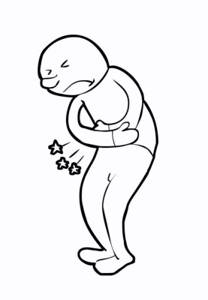
The so-called pancreatitis is divided into two subtypes: acute and chronic. Both are extremely painful and can be fatal in some cases. Pancreatitis is caused by a delay in the flow of pancreatic juice. Recently, differences in the course of the disease have become noticeable among the female and male populations. Excessive alcohol consumption is one of the main causes of pancreatitis. During the course of the disease, the pancreas ceases to function by seventy-five percent. The consequences are irreversible. In the acute stage, pancreatic disease manifests itself in an impressive variety of symptoms. Perhaps many scientists will agree that the first and main one is excruciating pain in the ribs. It can be so strong that people lose consciousness, experience painful shock, or even die. The duration of the attack is incredible: several days of incessant acute pain.
During a period of pancreatic disease, a person does not want to eat anything. He feels nauseous all the time. The patient begins to have problems with bowel movements and is actively losing weight. His blood pressure increases or decreases. Suffering during pancreatic disease is terrible. They are more than worthy to take their rightful eighth place in the ranking of the most severe pain in humans.
Secrets of men's health. Weaknesses of the stronger sexLev Kruglyak, 2020
Preface
Man is a unique natural phenomenon, but the laws that govern him are quite simple and very understandable to those who take the time to study them and observe the life of their body day after day.
Paul Bragg
Many years ago, in the Literary Gazette, the famous sociologist Professor B. Urlanis published an article “Take care of men.” In it, he to a certain extent overturned the usual ideas about the strong and weak fields. According to the author's calculations, a man is much more vulnerable to most diseases and more often than a woman becomes a victim of accidents. Statistics show that, although slightly more boys are usually born, over time this advantage is lost, and by the age of 60–70 there are almost half as many men, and their life expectancy is significantly inferior to that of women.
At all times, a man was assigned the role of breadwinner, hunter, warrior. Performing these functions always involves a certain degree of risk. A woman is characterized by a life associated with constant and painstaking work (raising children, maintaining family comfort, etc.). Men tend to abruptly replace hyperactive activity with passive pastime. And it’s not without reason that a large number of jokes have appeared on the topic of “a husband with a newspaper on the sofa or watching football on TV.” Perhaps they were created by women trying to influence men. And they did the right thing. As you know, it was adynamia that led to an increase in cardiovascular diseases, accounting for almost half of the deaths. Do not forget about alcohol and nicotine - no less serious risk factors. They, together with other reasons, contribute to congestion in the pelvic organs, provoking the development of chronic inflammatory diseases of the prostate gland.
Are there specific men's health problems? To a certain extent, of course, there are issues that require coverage and appropriate action. But even if they concern the sexual characteristics of the male body, it is unlikely that anything can be solved without the participation of women.
First of all, we are talking about generally accepted preventive measures. There is only one condition: the man himself must actively strive to be healthy. Currently, a huge number of means are known that allow you to maintain health and vigor until old age. These are natural factors: hardening, physical exercise, moderation in food (limiting fatty foods, salt, spices), various systems of cleansing and psychophysical effects on the body. Everyone is free to choose the right activity for themselves, and there is no shortage of information now. Of course, the hardest thing is to start working on your not always physically strong body. But the experience of many people shows that the need for health-improving activities and the pleasure received from them increase with their regular use.
Unfortunately, many men neglect their health. The false and widespread idea that they will always be young and strong sometimes leads to the development of serious pathology in the body. And, even having recovered, many consider this disease to be accidental and do not take any preventive measures to prevent the development of a relapse. This is due to the reluctance and inability to make volitional efforts, as well as the manifestation of selfishness, shifting the worries about one’s health from one’s shoulders to the shoulders of loved ones.
There is another side to the problem. This, to put it mildly, is poor awareness, ignorance of the essence of purely male problems: about love and tenderness, about maintaining and increasing potency, about some male diseases and their treatment, including traditional medicine, etc.
It should be noted that for many years no serious popular literature was published on these topics, because it was simply not customary to talk about problems associated with the genitals and sex. Most people, regardless of their level of intelligence, know surprisingly little about how the human body functions and what problems they may encounter if its activity is disrupted. Most often, a person simply does not pay attention to health-related issues until he encounters some situation that concerns him personally or his loved ones, and when this happens, he immediately begins to panic. Particularly difficult problems arise when it comes to pathology of the genital organs. In these situations, even educated, intelligent people completely lose their heads and begin to behave extremely inconsistently and illogically. I would like to remind you that prostate diseases are among the most common diseases of men starting in middle age. And although no one is immune from them, especially in old age, few people worry about prevention and early diagnosis. And only when serious symptoms appear does the search for a doctor begin. Often at this stage time is already lost for successful treatment. In advanced cases, only symptomatic treatment is prescribed, and if it is still possible to save the situation, surgical interventions are performed. Such indifference to one’s health somehow coexists with the fear of old age, often associated with diseases of the prostate gland (prostate). There are many men who turn a blind eye to their minor complaints and do not want to associate them with the onset of age-related changes. There is also a fear of sexual disorders caused by prostate pathology, but usually men hesitate to talk about this topic for a long time, even with a doctor.
The prostate gland is called the “second heart” of a man, and its role increasingly increases as old age approaches. In boys, it does not manifest itself in any way until adolescence. The prostate then begins to develop and becomes a functioning organ. Symptoms of a disease called juvenile prostatitis may appear. From 20 to 40 years, chronic inflammatory diseases of the organ become more frequent, involving the seminal vesicles in the process. Acute prostatitis is rare. Beginning with a sluggish, chronic process, prostatitis is typical for 30-50-year-old men. At this age, tumor-like growth of the gland usually does not occur, but swelling caused by the inflammatory process is noted. After 40 years, mixed forms are possible, indicating a transition to the next stage of development.
You can talk about age-related enlargement of the prostate from the age of 40. But its growth is so slow that often only after 60 years do men begin to notice problems with urination. The need for surgical treatment occurs only in 5% before 50 years of age, and in 10% between 50 and 60 years of age. The older a man is, the greater the likelihood of age-related enlargement of the prostate. After 60 years, the disease is observed in almost every third out of four, and after 70 years - in almost everyone, although only every second or third man has complaints. It is believed that every seventh of them needs surgical treatment.
I would like to use this information to give men (and, naturally, their loving women) the opportunity to understand the essence of changes in their body, including age-related ones. To do this, you need to become familiar with the structure and functions of the male genital organs, emerging diseases, methods of diagnosis, treatment and prevention (including non-traditional ones).
Previously, it was not customary in the literature for a wide range of readers to describe diagnostic and therapeutic measures in detail. It was a closed, working “kitchen” of doctors. However, a person has the right to know what awaits him at each stage of the path to recovery, and must actively participate in this process. Only then will he succeed.
It must be admitted that “men’s diseases” are the price of a fairly high standard of living, for which one has to pay. Nevertheless, knowledge of modern preventive measures, including the use of herbal medicines (herbal medicine), allows you to influence the course of the disease and avoid serious complications.
The healing properties of plants have long been used by humans to treat various diseases. Studies of the pharmaceutical properties and therapeutic activity of medicinal plants show that in medicinal practice it is possible to use not only individual substances isolated from plants, but also the plants themselves without any chemical treatment. Many herbs and food plants have such high medicinal properties that they can be included in the arsenal of medications used in modern medical practice. At the same time, herbal medicine, along with therapeutic nutrition and balneology, refers to a type of treatment that is aimed at stimulating the vital activity of the whole organism and generally has a positive effect on the course of the disease. In recent years, homeopathic medicines and anthroposophical medicine have been increasingly used.
Many of the topics listed above begin to worry men acutely at a certain stage of their life path, but it is not always possible to find the necessary answer. Awareness of the processes occurring in the body will help readers better understand the issues that interest them and come to the right decision. It may be possible to remove at least some of the concerns and fears and take a more realistic approach to the health of the intimate sphere.
In any case, this is not a manual for providing specialized care. If you identify the first signs of the diseases described here, you should consult a doctor who, after the necessary research, will make an accurate diagnosis and prescribe qualified treatment. The tips recommended here enhance the effect of this therapy, and also contribute to the prevention of diseases and their regression. This is especially true for men over 45 years of age. We strongly advise them to undergo an annual preventive examination with a urologist - an activity that is not burdensome, but mandatory.
Ninth place. Acute arthritis
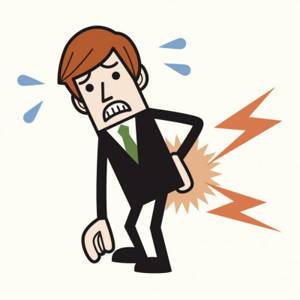
Answering the question of what is the worst pain in the world is not so easy. But arthritis, from which a huge number of people suffer to this day, cannot but be included in the list. Most often caused by poor diet or lack of vitamins, this disease has long gained the reputation of being a most unpleasant disease. In the overwhelming majority of cases, it affects adult men and women who have reached the age of forty, but children are not protected from some forms of arthritis.
The disease manifests itself mainly in the form of acute pain in the affected joint. Also one of the symptoms is redness of the skin. The patient cannot strain the joint, which is now, on top of everything else, swollen to incredible sizes. And do not forget that a person susceptible to arthritis experiences constant weakness. Ultimately, lack of appetite leads to unhealthy weight loss. Because of arthritis, the patient cannot even sleep, because at night the pain (already unbearable) only intensifies.
What are they, the erogenous zones of men?
Knowing exactly the erogenous zones of men, you can deftly control their behavior, giving them sweet moments. Moreover, if the body is caressed by a beloved woman, then it all turns into a single area of excitation. However, gentle touches to certain points will bring even greater pleasure and pleasure.
In physiological terms, erogenous points in men are nerve endings that act according to certain laws of the entire human nervous system. Therefore, no matter what the partner’s mood, a woman can always awaken passion in him, knowing the secret places of his body. This is very important information for a loving couple. Otherwise, problems may arise in your intimate life due to ignorance of the secrets of arousal.
Some people believe that the only sensitive part of the body is the genitals. But there are also hidden erogenous zones for men, which are located where there are a large number of nerve endings. Among them are the tongue, the navel, the tips of the fingers, and even the ankles. They are all individual. Therefore, it is very important to constantly explore your partner's body and find them. Erotic massage, which is very often included in the foreplay of love games, will help with this. You may not even be aware of some hidden points.
It is worth noting that the ability to find erogenous places in men is very valuable. After all, in this way you can give pleasure not only to your loved one, but also to yourself. You can caress with your fingers, palms or tongue. It is on these parts of the body that a large number of nerve endings are concentrated. Their stimulation leads to inevitable arousal.
There are places on a man's body where erogenous zones can be hidden. So, few people pay due attention to their back. The pleasure centers here are located between the shoulder blades, as well as in the place where the sacrum is located. A woman can caress her back not only with her palms, but also with her breasts. This will bring much more pleasure to your partner.
There is nothing sexier than a man's buttocks - this is a man's special erogenous zone. Touching the loin of the body causes strong sexual arousal. Even if the partner is tired or has no nerves, he can be aroused by a gentle massage of this part of the body, and sexual desire and desire will certainly appear.
The erogenous zones of men are very diverse. Don't ignore the neck either. She reacts to kisses or light touches with the tip of her tongue. Sensitive places are located on the side of the neck, starting from the shoulder and ending with the auricle. By the way, you can also play with a man’s ear. It is also necessary to gently stroke the area of the back of the head. There are also many nerve endings here. Often during foreplay, couples use just such exciting touches.
Of course, the male breast is one of the parts of the body that enters the erogenous zones of men. She cannot be compared in sensitivity to women. However, you can very much arouse your partner with gentle touches of your fingertips, lips and tongue to the nipples. It will be especially pleasant if you stroke your loved one’s chest with light movements that will resemble drawing a figure eight.
From the chest you can slide lower and provocatively play with the man’s navel and stomach. It is better to caress these erogenous zones of men for a short time. Otherwise, your partner will become very ticklish, and the whole foreplay will turn into a real farce.
Finally, the genitals are the most sensitive part of a man’s body. Especially if slight excitement has already set in. If you want to prolong the pleasure achieved through intimate caresses, it is better not to touch the penis right away.
The peak of your partner's arousal can be achieved by massaging his genitals. Gentle manipulation of the testicles, scrotum and penis will cause a lot of pleasant sensations in a man. Additionally, you can stroke the lower abdomen. This will cause even greater excitement, which will certainly end in passionate sex.









